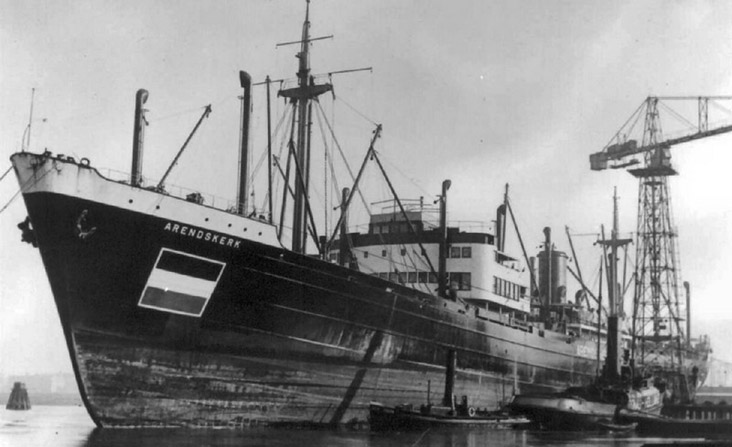I Was There! - The Men Called Me 'Skipper'
The War Illustrated, Volume 2, No. 21, Page 28, January 26, 1940.
A fine feat of seamanship and courage was performed by 18-year-old Malcolm Morrison, from Stornoway in the Hebrides. After his ship, the "Arlington Court" (see page 445) had been torpedoed, Morrison navigated a waterlogged lifeboat for six days. His story is here reprinted from "The Daily Telegraph".
When the "Arlington Court" was sunk in the Atlantic, six of the crew, including two firemen, the cook, aged 65, a galley-boy and another youth, took to one of the lifeboats.
As Morrison was the only one of the six who knew how to set a sail – knowledge he had gained as a boy in a drifter – he took charge of the boat. He even took charge of the very limited water supply and doled out half a cupful a day to each man.
With the aid of a small compass, he steered a course which brought him into a busy shipping lane where the lifeboat was sighted and rescued by a Norwegian tanker.
Morrison's feat was brought to the notice of the Admiralty, and it was decided to invite him to London to tell the story of his experiences to high naval officers and to receive their congratulations.
Interviewed in London, Morrison said: "High seas were running when we started on our six days' search for land.
"At first some of them tried to row the boat, but they broke two of the four oars and had to give it up. So I rigged up a sail and took charge of the steering.
"I was the only one in the boat who seemed to know anything about sailing, and I kept my hand on the tiller all the time. The men got to calling me 'Skipper'.
"None of us was fully dressed, as we had to leave the ship in a hurry when she was struck. I had on my trousers over my pyjamas, my sea boots and a life-saving-jacket. In the boat were four blankets, but in the heavy seas we shipped a lot of water and these soon became soaked.
"We all suffered terribly from the cold and had frostbite, particularly in our legs.
"One night we sighted a neutral ship but she did not answer our flares. Next day a convoy failed to see our signals.
"For two more days we sighted no ships, and I was getting anxious about the water supply.
"We struck stormy weather again, and I reckoned we were about 200 miles from land when we were picked up by a Norwegian tanker and landed in England."
Asked how he knew in which direction to steer, Morrison said he had taken turns at the wheel of the "Arlington Court", and he followed the northeasterly course that was being taken by the ship. He was able to steer at night because the dial of the compass was illuminated.
Previous and next article from I Was There!
I Was There! - We Were Prisoners On the 'Graf Spee'
On board the "Graf Spee" as prisoners were the captains of six British merchant ships, who were uncomfortably aware of the action although they saw nothing of it. These accounts are due to the "Daily
I Was There! - Though Neutral, the Nazis Torpedoed Us
Despite protests by her captain that he was not carrying contraband, the 8,000-ton Dutch freighter "Arendskerk" was sunk by a German U-boat in the Bay of Biscay on January 15. The captain's story is h
Index
Previous article
Heroes of Wartime Black-out - Unseen & Unsung
In broad terms their name is legion, not forgetting the newsvendor who still stands shivering at his wintry pitch, lustily shouting "the latest" when you can only discern him dimly by the glow of his
Next article
I Was There! - Though Neutral, the Nazis Torpedoed Us
Despite protests by her captain that he was not carrying contraband, the 8,000-ton Dutch freighter "Arendskerk" was sunk by a German U-boat in the Bay of Biscay on January 15. The captain's story is h




